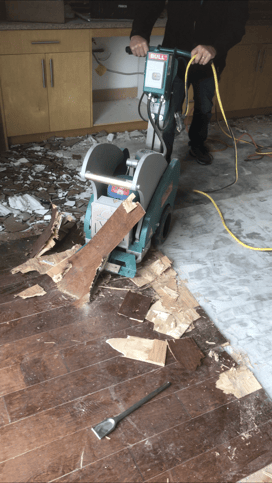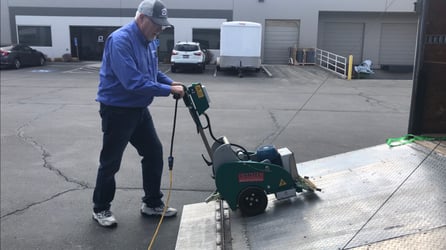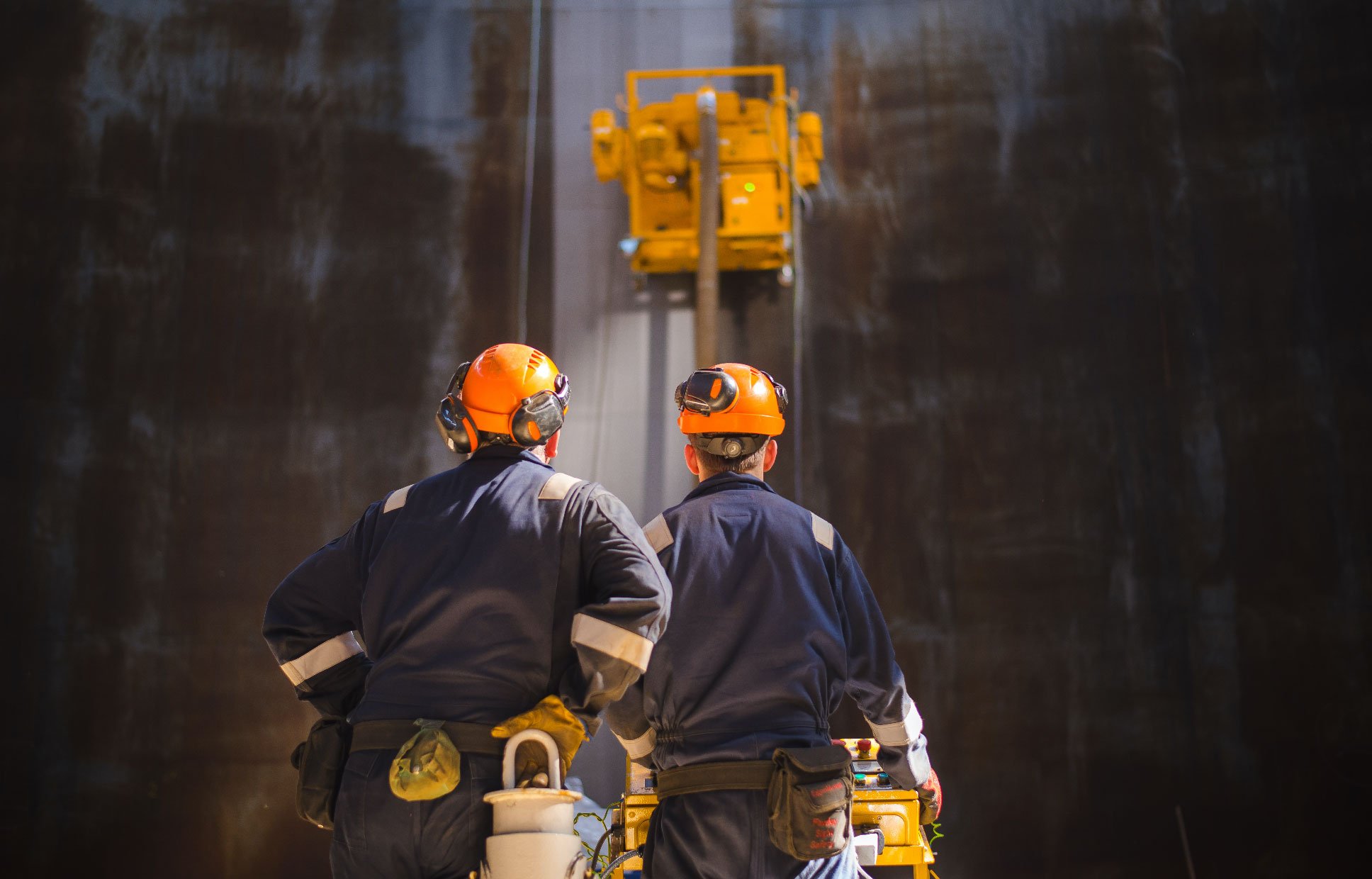
Walk-behind floor scrapers have been around for a long time and have done well on smaller jobsites as well as floors that can not be accessed by a ride-on floor scraper.
There is though, a common problem or challenge faced by contractors, especially with the development of much larger and heavier Walk-behind machines, the challenge becomes…
How do I remove material off wood flooring and light weight concrete without digging into the surface?
While every floor removal project has it's own set of conditions and, frankly, some floors just can not be removed with conventional power scrapers... Most, by far, can. There are steps a contractor can take to greatly increase your ability to be successful removing material on soft substrates, those steps simply are...
Tooling & Technique.
Yes, using the correct tooling in the correct way is critical to a successful removal project. Here are a few points that has helped me remove material off soft substrates in the past.
TOOLING
- Dull Your Blades… a sharp blade works great on concrete but tends to dig into softer floors, so, slightly dull the blade before beginning the removal process. Also, when using a “Self-Dicing” blade, dull the part of the blade resting on the floor but be carful to keep the self-dicing part of the blade as sharp as possible.
- Mount the blade upside down… on conventional removal projects, you would mount the blade with the bevel up. but on softer floors, mount it with the bevel down... this will encourage the blade to “Skim” across the top of the soft substrate and not “Dig” into the floor.
- Lessen the “Attack angle”… some machines like the BULL by Bartell Global has a angle adjustment tool that allows you to make your attack angle greater or lesser by 10%. so, by lessening your attack angle it encourages the blade to, once again, skim across the surface and not dig in.
- Lighten your head pressure… if you have removable or adjustable weights, remove or adjust them so you have less downward pressure, and the blade will tend to slid across the top of the floor and, again, not dig in. (The BULL mentioned earlier, has 250lbs of adjustable and removable weights)
- Use a wider than normal blade… a wider blade will lessen the downward pressure, spreading it out across the width of the blade and lessen the likelihood of digging into the substrate.
TECHNIQUE
- Remove material “With the grain”… if you are removing material off a wood plank flooring like old oak floors, you will most likely have more success working parallel with the planks and if possible with the grain of the wood so the blade is less likely to dig into the floor.
- Work at a 45’ angle… this sometimes helps to not as readily dig into the floor.
- Pull as you remove… have another worker “Pull” on the material being removed as your running the machine. These two actions often will make the flooring release from the floor more easily.
- Let the machine do the work… slower is better when removing flooring in these conditions so don’t try to make the machine remove material faster than it wants to, it will tend to either dig into the substrate or jump up onto the surface of the material you are trying to remove.
"THINK OUT OF THE BOX"
The amount of success you have in removing flooring weather it be by hand, walk-behind or ride-on machines are directly related to a contractor thinking “Out of the box”... All good flooring removal contractors are adaptable. So, if how you are working is not being successful, stop and try something different. There are few floors that can’t be removed with a little "Thinking out of the box".
Another question that needs answering...
MOBILIZING LARGER WALK-BEHIND MACHINES
With the larger machine being used today, contractors have had questions about getting these machines onsite, seeing that they are ranging from 300 – over 500lbs in weight. the question becomes... How do I get it in the truck? Up flights of stairs? In most cases it is surprisingly easier than you would think. Check with the company you are getting the machine from or the manufacturer of the machine you are using and they will be able to give you best practices when loading and transporting their machines.

With the BULL walk-behind mentioned earlier, (I work with this machine so I am very familiar with it) it is as simple as having a set of ramps and a 110-power cord and you are easily able to “Lock” the machine in forward motion and the machine will “Walk” itself up the ramp into your truck or van and walk it out the same way. The same principle applies with stairs though you will most likely use a 2x12 cut to the correct length and for safety it is best to remove the 250lb weights by removing 4 bolts. also, have help, never try to load equipment alone.
NOTE, it is always best to receive training on these methods by a product trainer to insure safe operation of these machines.
CLICK HERE FOR MORE INFORMATION ON CHOOSING THE CORRECT FLOOR SCRAPER
LAST, call with questions... all flooring removal machine manufacturers want you to be successful with our equipment and we all have members of our teams with a lot of experience running the equipment and can answer any questions you might have and help you be successful.
Here at Bartell Global, it's 425-405-9100... give us a call.

